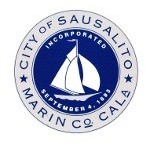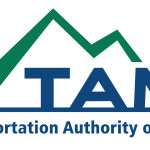10/2022 Blog Topic: The way supply chains work suggest no easy relief for Marin businesses
October 2022
| Early in the pandemic, I suggested to a KTVU news reporter that economic recovery in Marin would depend on a “resumption of consumption.” That is, once all businesses were allowed to be open and consumers felt safe to leave homes and spend money, they would, ushering back the robust, pre-pandemic, consumer-driven economy in Marin. Little did we know at the time, even with money to spend and stores to frequent, supply of goods, and not demand, would influence recovery. This fact was recently confirmed with the 2.0% GDP growth rate reported for Q3 2021 against an expectation of 6.8%; supply chain issues were the chief culprit of the slower rate of growth according to economists. That slow down in economic activity is also being felt in Marin, where all kinds of businesses cannot get the products they need or their customers want. To understand the supply chain issue, you must first look beyond the narrative that it has mainly to do with COVID-induced worker shortages. The production and movement of a good across the globe is a complicated feat. That water bottle or those shoes you purchased are the result of materials, production, energy, transportation and, yes, labor. A fault in any one of these factors of production can result in a temporary delay or price increase as we recently saw with lumber, which was a materials issue. However, in a recent congressional hearing convened by the House of Representatives Committee on Small Business, supply chain experts declared the early shutdowns from COVID set manufacturing and transportation behind, resulting in a higher-than-ever demand, exacerbated by long standing infrastructure issues. What is constraining supply chains goes beyond a shortage of workers they stated. What is driving demand? It really comes down to two main factors. First, spending habits have changed because of the pandemic. More money is flowing into goods, like home furnishings, than services, including travel or entertainment. Second, for multiple reasons, from government stimulus to increased asset values, people have more money to spend (household savings rates have never been higher) and borrowing costs for big purchases like cars and homes are extremely low. To bring this down to the local level, demand for goods has remained high because many Marin residents’ income was not affected by the pandemic with easy shifts to remote work. Second, many small businesses were able to pivot to online selling, food delivery, or curbside pick-up which enabled consumers to consume, thus reinforcing the notion that goods were available when desired, despite a pandemic. In fact, county-wide sales tax revenues (including online purchases out of the County) increased during 2020 by over 10%. The high demand certainly enabled Marin businesses to sustain — they now need additional supplies. This is where the problem lies in Marin’s economic recovery. At the national level, spending on goods dropped by 9.2% between June and September, a direct result of lower inventories to sell. This was the first decline in spending since early in the pandemic when stores closed. So economic recovery is now less a factor of demand, which many of us considered the key to recovery, and more a factor of supply to feed demand. This dynamic is also problematic for Marin businesses who, simply put, are the furthest downstream in the global supply chain (as they sell to the final customer). That means these businesses yield little influence on production or delivery of goods they need, relative to larger operators, like national retailers or direct wholesalers/importers. Further, the relatively small market and business size in Marin means retailers that rely on global branded products may be lower priority for distributors, again, constraining retailers’ ability for throughput sales that would increase revenues. When will this end? In a recent Wall Street Journal survey of 67 economists, 33% predicted supply chain issues to be resolved by Q2 of 2022 (June) while an additional 47% predicted them to persist into Q3 and Q4. Even the world’s largest furniture maker, IKEA, announced it expects supply chain delays “well into 2022.” Is there an opportunity here? Perhaps. A recent study on manufacturing by the Bay Area Council Economic Institute evaluated opportunities for near shoring, reshoring (bringing manufacturing back stateside), and other manufacturing in the Bay Area region. There was some indication that the North Bay could do so with food and beverage, but not much else. Likely businesses and consumers will have to wait this one out. There are few, if any, policy tools to influence global supply chains (demanding opening a port 24/7 might be one but that remains to be seen). In the meantime, shop local, even if it’s a different color jacket or chair, because that is what is available and what our businesses need. |
Mike Blakeley, CEO
Marin Economic Forum
Tags: blog














